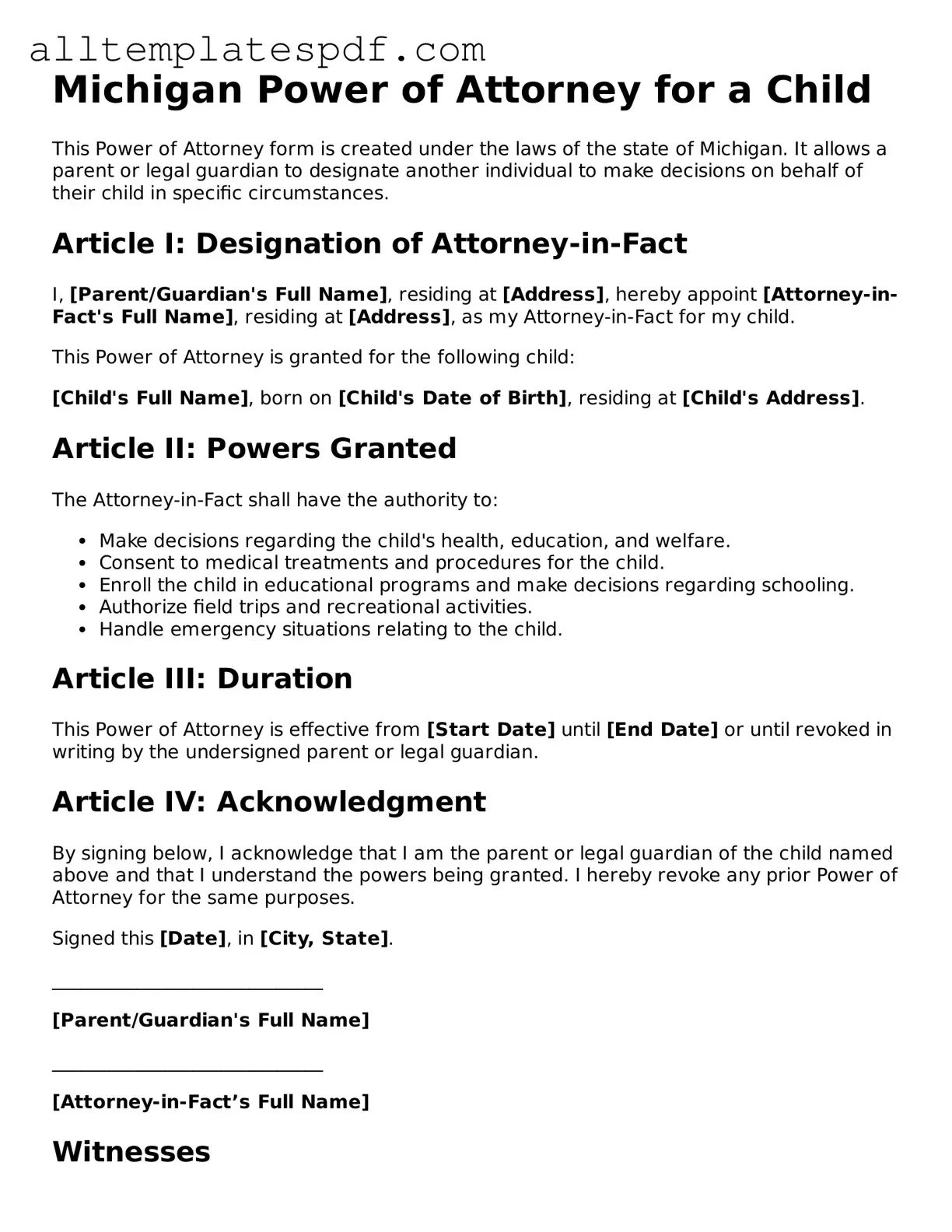Filling out the Michigan Power of Attorney for a Child form can seem straightforward, but many people make common mistakes that can lead to complications down the road. Understanding these pitfalls can help ensure that the document serves its intended purpose effectively.
One frequent error is not clearly identifying the child. It's essential to provide the child's full name, date of birth, and any other identifying information. Omitting this information can create confusion about who the document pertains to, potentially invalidating the authority granted.
Another common mistake is failing to specify the powers being granted. The form allows for a range of responsibilities to be assigned, from medical decisions to educational choices. If the powers are not clearly defined, the person acting on behalf of the child may not have the authority they need to make crucial decisions.
Many people also overlook the importance of signatures. Both the parent or guardian granting the power and the individual receiving it must sign the form. Without these signatures, the document may not hold up in legal situations, leaving the child unprotected.
In some cases, individuals forget to date the form. A date is vital as it establishes when the power of attorney becomes effective. If the date is missing, it could lead to disputes about the timing of the authority granted.
Another mistake involves not having the form notarized. While notarization is not always required, it adds an extra layer of legitimacy. Failing to notarize the document could lead to challenges regarding its validity, especially if the form is contested later.
People sometimes neglect to inform the child about the arrangement. It’s important for the child to understand who will be making decisions on their behalf and why. This transparency can help ease any feelings of confusion or anxiety they may have.
Some individuals may also use outdated forms. Laws and requirements can change, so it's crucial to ensure that the version of the form being used is the most current. Using an outdated form could result in legal complications.
Another common oversight is not considering the duration of the power of attorney. It's important to specify how long the authority will last. Without this clarity, there could be misunderstandings about when the power ends, which can lead to issues in the future.
Lastly, many people forget to keep copies of the completed form. Having copies readily available can help in situations where the document needs to be presented. Without copies, it may be difficult to prove that the authority was granted, leading to unnecessary complications.
By being aware of these common mistakes, individuals can take the necessary steps to ensure that the Michigan Power of Attorney for a Child form is filled out correctly, providing peace of mind and security for both the child and the person acting on their behalf.
